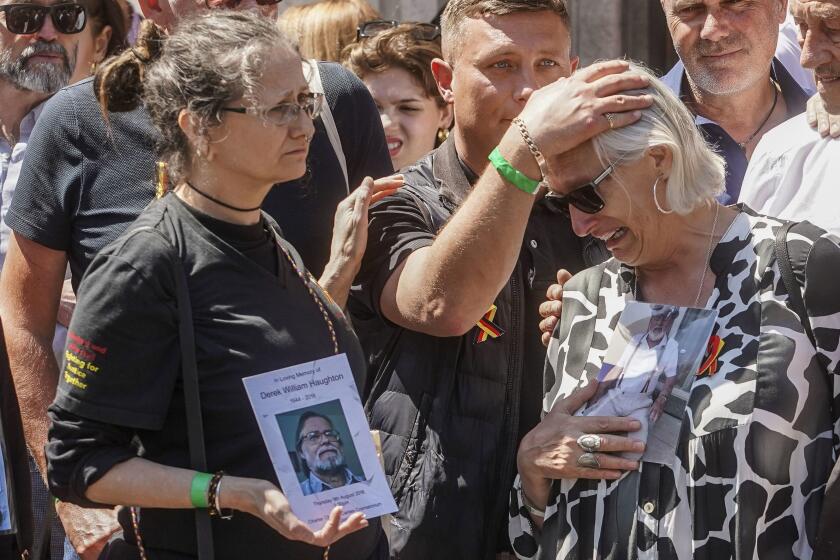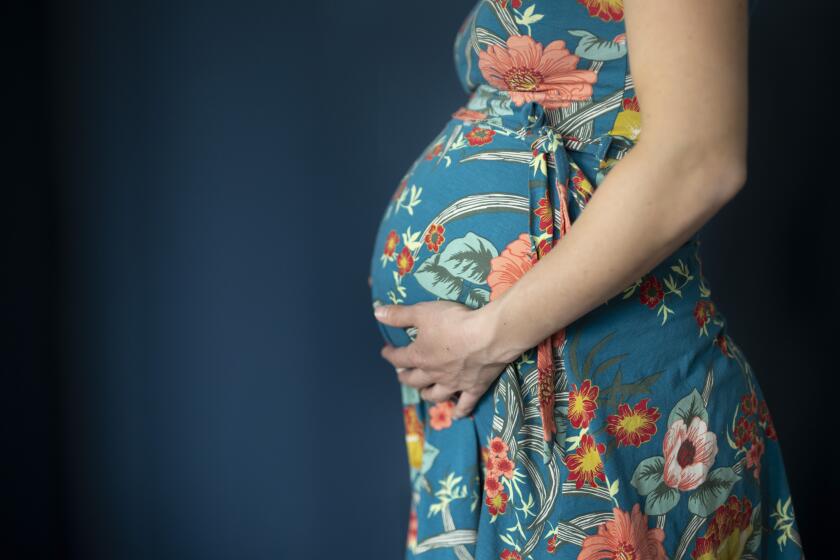Child ‘Cured’ by Gene Therapy Develops Cancer
A French boy who had been considered one of the few people cured by gene therapy has developed a leukemia-like disease, prompting the Food and Drug Administration to halt three gene-therapy trials in the United States. Two of the trials are run by researchers at Childrens Hospital Los Angeles.
It is unclear whether the gene-replacement technique caused the boy’s new illness. Still, the incident threatens to further dampen hopes for gene therapy, which has been under intense scrutiny since the 1999 death of a teenager in a University of Pennsylvania experiment.
In gene therapy, healthy genes are placed in a patient’s cells in an attempt to compensate for the faulty genes that cause disease. The technique is considered one of the most exciting ideas to emerge from the explosion of information about human genes, with prospects for treating cancer, hemophilia, AIDS and other ailments.
The French boy, now 3, had undergone the process as an infant to control “bubble-boy” disease, a rare immune system disorder that is fatal if untreated. The boy’s immune system rebounded, and he was able to leave a sterile hospital environment--or “bubble”--and live at home. He was one of four boys included in a French study, published this spring, that is considered the only definitive proof that gene therapy can work.
In August, however, doctors found that the boy had developed cancer in his blood, similar to leukemia. The boy is now being treated with chemotherapy. It was the first time the illness appeared in any of the 32 or so patients treated worldwide by gene therapy for the immune-system disease, including nine other children in the French study.
Still, FDA officials revealed Thursday that they had halted three U.S. gene-therapy trials last month, days after learning that French authorities had stopped trials run by Dr. Alain Fischer and colleagues at the Necker Hospital for Children in Paris, where the boy had been treated.
Authorities said the incident was not made public until Thursday to give French researchers time to talk with patients before the news hit the media.
Dr. Phillip Noguchi, director of the FDA’s Division of Cellular and Gene Therapies, said 150 or so gene-therapy trials are underway in the United States. The three suspended trials and the French trial all target the same disease: severe combined immunodeficiency, or SCID. Only one of the trials had begun to treat patients.
Noguchi said the FDA did not halt other gene-therapy trials because “what we’ve seen so far would say the potential benefits still outweigh the potential risks in those other trials.”
An FDA advisory panel will discuss the issue at a public meeting next Thursday. Noguchi said the agency had also asked researchers to talk with patients in several past gene-therapy trials “so that they are aware of the latest knowledge.”
Researchers said it would take more study to determine whether the blood disease was truly a side effect of gene therapy, and how common a problem it might be. Scientists in touch with Fischer, the French researcher, said some preliminary evidence had begun to emerge linking the therapy and the new disease.
In SCID, which has several causes and occurs in 1 in 75,000 births, the patient’s body contains a faulty gene and fails to make proteins needed to produce immune cells. Immune cells, in turn, fight disease.
For many patients, the only treatment is a bone-marrow transplant. However, 80% of patients cannot find a donor with cells that function well in the patient’s body, said Dr. Donald Kohn of Childrens Hospital Los Angeles, principal researcher in one of the suspended studies.
A quarter or more of those patients will die, he said, even after receiving bone-marrow transplants from parents, unrelated people or siblings who are not a close match.
Researchers want to restore the gene that goes awry in SCID. The process involves removing some of the patient’s bone-marrow cells, inserting a healthy gene and returning the cells to the body in hopes that they will produce healthy disease-fighting cells.
In the French experiment, a mouse virus was used to carry the new gene into the DNA of the bone-marrow cells. The process worked in nine out of the 10 boys treated so far, say researchers familiar with the French study.
Many researchers suspect that the virus may have caused a problem when it carried the new gene into the bone-marrow cells. It may have turned on a gene that causes cells to proliferate, or turned off a gene that prevents cells from growing out of control.
W. French Anderson, who in 1990 performed the first authorized gene-therapy experiment, said researchers have long feared that adding a gene would cause problems, because there is no way to control where in the DNA the new gene will land.
“It is not unexpected. We knew it would happen sooner or later,” said Anderson, now with the University of Southern California’s Keck School of Medicine. “It’s what we’ve been saying for 30 years now: Gene therapy should only be used in the treatment of serious diseases, because there are risks.”
Kohn said that preliminary research on the French boy’s cells showed that the new gene landed near another gene involved in leukemia. “But drawing a causal link requires more study,” said Kohn, who is also president-elect of the American Society of Gene Therapy.
Fischer’s team analyzed the gene that had been inserted into the cells, “and it looks perfect,” suggesting that the new gene itself was not the source of the problem, Kohn said.
Dr. Mark Kay, a professor of pediatrics and genetics at Stanford University, said researchers would also have to consider the fact that bone-marrow cells in the patient had been given the task of producing a large number of immune cells, “and we know that multiple cell divisions are one of the factors that could lead to cancer. As the cells divide, there’s always the risk of a random mutation occurring” that results in cancer.
In other words, he speculated, the very task assigned to the modified bone-marrow cells may have raised the odds of contracting leukemia. “But there are so many unknown factors that right now, it’s hard to know,” he said.
Kay said Fischer’s work on SCID patients had been “the first study where it looked like there was substantial clinical benefit from gene therapy. It was unequivocal. These kids did better. That’s why it was a highly cited trial.”
Kohn said four patients had been treated so far in his study. All had all been examined in recent weeks, he said, and none showed any leukemia-like symptoms. That study included patients with a type of the immune disease called SCID-ADA.
A second Childrens Hospital Los Angeles study, as well as one at the National Institutes of Health, plans to include only patients with a second form of the disease, called X-linked SCID. The French study also focused on X-SCID, which affects only boys.



